Crepe myrtles are a delightful addition to landscapes and gardens because of their beautiful flowers and leaves. However, you may wonder if the leaves of the crepe myrtle change colors, and if so, why? We researched more about the changes this plant undergoes to give you an answer.
The leaves of a crepe myrtle will change in color due to natural processes. The levels of chlorophyll in leaves, fluctuations in temperature, soil quality, sunlight, and water will cause a crepe myrtle's leaves to change in color. However, fungal infections, pests, and other problems can also cause a crepe myrtle's leaves to change. It is important to prevent or remedy any poor health problems and encourage healthy, long-lasting, colorful foliage.
If you still have some questions about crepe myrtle leaves changing colors, don't worry. In this post, we'll explore the topic in more detail. Continue reading to learn more about what causes a crepe myrtle's leaves to change color and other helpful information.
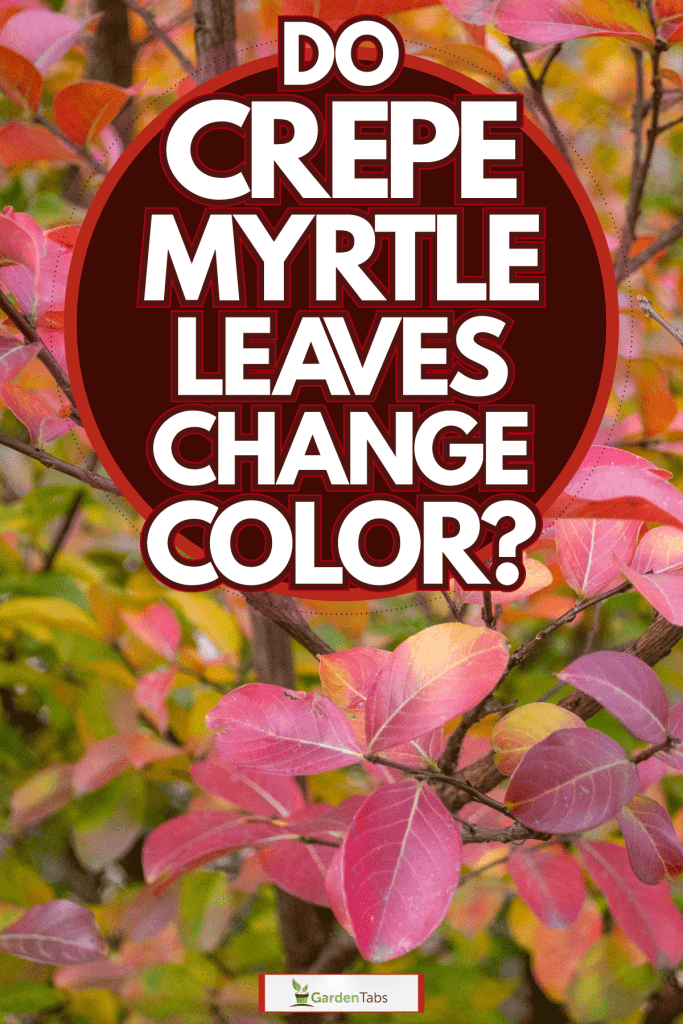
The Foliage Of Crepe Myrtles
The crepe myrtle is a common sight in the southern part of the United States, known for its lovely leaves, blossoms, and captivating beauty. During the summer and fall, the crepe myrtle is a small shrub or tree that exhibits a range of pinks, purples, and gold.
When the levels of chlorophyll drop in the leaves of a crepe myrtle, all of the color possibilities began to come through, creating much delight. Typically, the natural changes within the plant from summer to autumn cause this hardy plant's leaves to change colors.
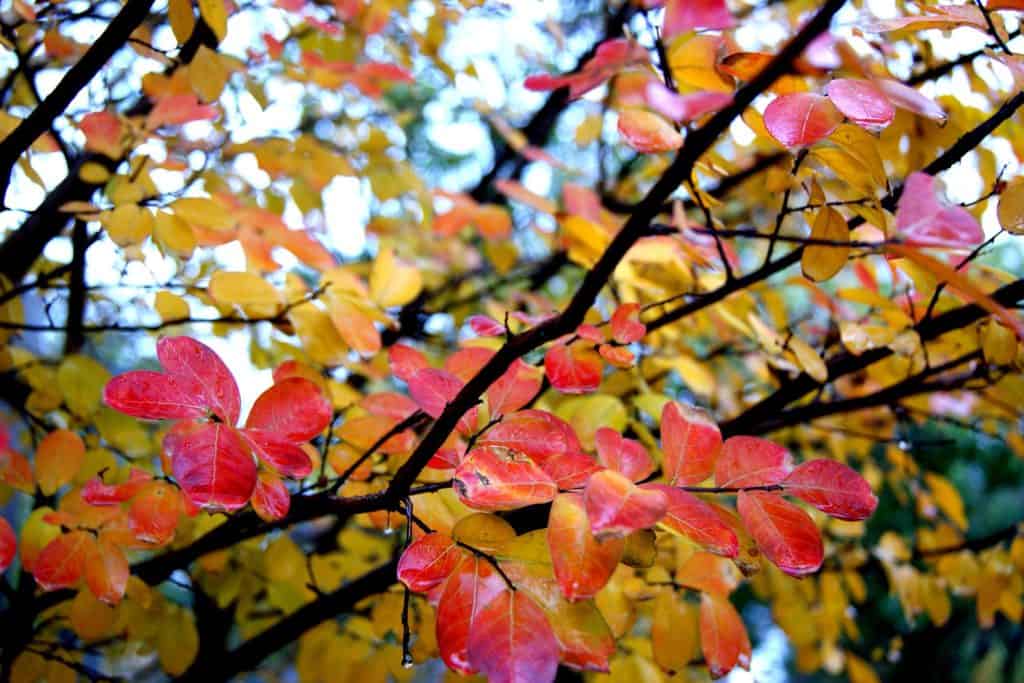
Because a crepe myrtle's colors provide much color and joy, you may be curious if there are any methods to prolong the longevity of its blossoms and leaves. Although this plant eventually loses its leaves and blossoms when winter approaches, there are things you can do.
For best results, it is best to grow a crepe myrtle in zones 6-9. If your crepe myrtle will be exposed to frigid temperatures in the winter, take protective measures to ensure your tree is healthy the following year. Health problems can impact foliage and blossoms.
Read more: Crepe Myrtle Flowers Are Falling Off – What’s Wrong?
Conditions That Promote Color Changes
When a crepe myrtle is healthy, shades of gold, red, purple, and pink should come through its normally green leaves in the late summer and fall. However, sometimes problems with mildew, mold, sunlight levels, or moisture can cause leaves to change color.
Cercospora leaf spot is a fungal infection that causes the leaves of the crepe myrtle to develop black spots. As the infection progresses, the leaves may change to a yellow, red, or orange color and then die off shortly after. Rainy weather often causes this fungus to develop.
Bacterial leaf scorch is a terrible affliction that causes the leaves to change to a yellow color. However, this condition typically requires removing the tree, as it cannot be revived. In the winter, it is normal for leaves to die off and return next year if the plant is healthy.
Some gardeners like to deadhead their crepe myrtles to encourage a second blooming and remove any damaged leaves or flowers. Plus, it is critical to check for changes in the bark and leaves caused by fungus, rot, or pests that cause leaves to change color or even die off.
Read more: What Is Eating My Crepe Myrtle? [4 Common Pests]
About Crepe Myrtle Leaves
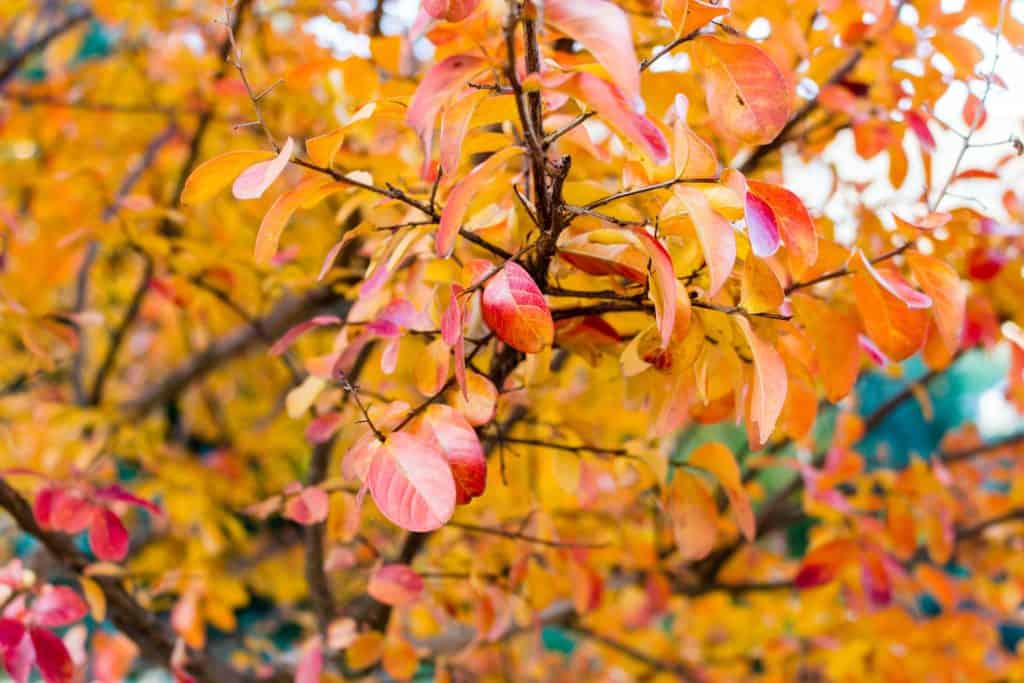
You can expect your crepe myrtle to sprout leaves in the spring around late March or early in April. However, if there are unseasonably warm temperatures in the late winter, the tree can show leaves even earlier. Blossoms follow leaves in the midsummer.
Typically, when the temperatures are consistently in the 80s for a few weeks, the crepe myrtle begins to show its foliage. If you notice that your crepe myrtle is not developing leaves, check the buds for cold damage over the winter or disease.
Cut open a leaf bud to check for problems. If the bud is brown all the way through and the neighboring bark underneath is too, that section of the tree is dead. However, a bud that is green on the outside but brown on the inside is a sign of cold damage.
Encourage healthy foliage and prune your plant before winter sets in. Additionally, protect your plant from harsh, frigid temperatures. Cut away and remove any dead wood, branches, and leaves to promote good health. Only leave sections where the plant is green.
Why Do Crepe Myrtle Leaves Turn Red?
Typically, if a crepe myrtle has white flowers, the leaves will turn yellow in the fall. However, if the shrub or tree bears blossoms that are pink or purple, the leaves are often a rich shade of red.
Be on the lookout for problems like fungus, as it can cause a crepe myrtle's leaves to turn red and then quickly fall off of the plant earlier than expected. If you discover any signs of mildew, rot, fungus, pests, or dead sections of your crepe myrtle, remove them immediately.
Ensure that your plant has sufficient levels of sun, water, nutritious soil, and is free of anything that will shorten the lifespan of its foliage. Promote a crepe myrtle to blossom fully and keep their leaves longer by planting it an area with plenty of sun and good drainage.
If fungus is a problem, in addition to deadheading or pruning any troubled areas, consider applying a commercial fungicide to treat your tree and prevent future issues. Ensure the soil is fertilized, reduce erosion, and avoid too much or too little moisture for best results.
Check out this fungicide for plants on Amazon.
What Color Are Crepe Myrtle Leaves In The Fall?
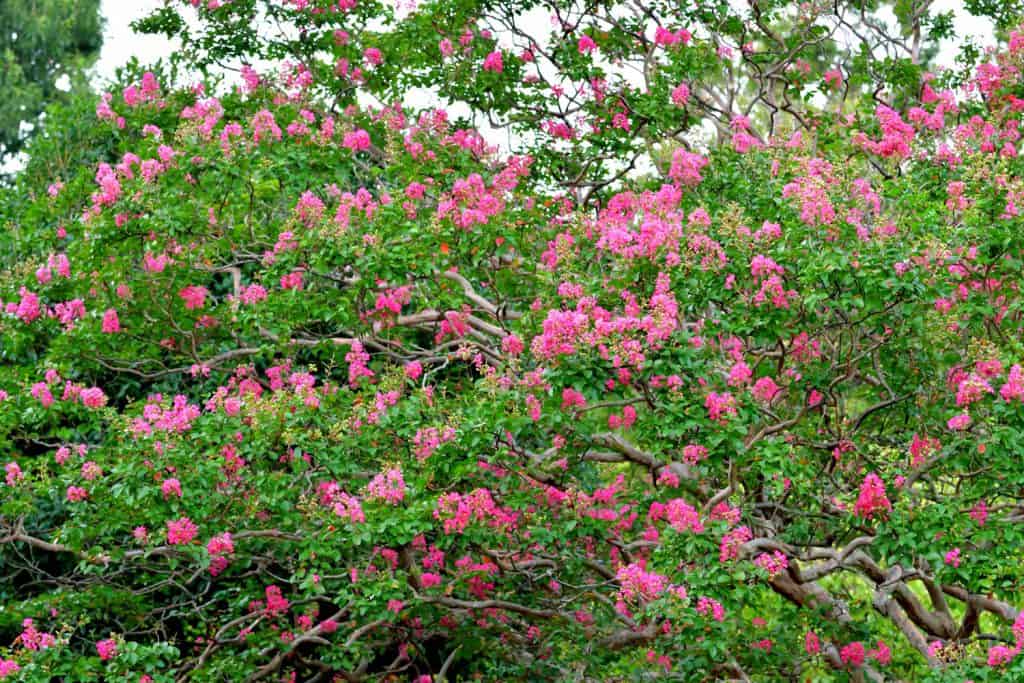
The color of a crepe myrtle's leaves is largely determined by the genetics of its variety and environmental factors. During the spring and summer, a crepe myrtle usually has vibrant, deep green leaves. As long as the plant is healthy, it shouldn't turn colors at this time.
During the fall, it is normal for a crepe myrtle to change from green to yellow, orange, or red. Sometimes the leaves may take on a purple color which is close to blue too. If the blossoms of the crepe myrtle are white, the leaves usually turn yellow.
If the flowers are pink, red, or purple, you can expect leaves that are some shade of purple, red, or orange. However, be on the lookout for any health problems like sun scorch, mildew, fungus, or pests that cause leaves to turn brown, black, or dry up and fall off.
Additionally, some diseases and health problems can cause a crepe myrtle's leaves to change color before autumn or to fall off early. Fungus can cause leaves to change from a healthy green to a yellow, red, or purple color. Enjoy foliage and flowers until winter arrives.
Check out this pack of crepe myrtle seeds on Amazon.
Do Crepe Myrtles Turn Blue?
The leaves of a crepe myrtle do not turn a shade of blue. However, certain varieties of this plant can display flowers that are close to a blue hue. But any color seen is usually within the purple color family. One variety of crepe myrtle is said to show lovely blue flowers.
You may try your luck growing a "True Blue Crepe Myrtle" that presents fantastic blue flowers. Note that this type of crepe myrtle is rare indeed and is a dwarf variety that only grows to a maximum height of about 5 feet.
Keep in mind that most crepe myrtles will develop blossoms that are pink, red, lavender, or a regal purple color. Blue blossoms on a crepe myrtle are not common, and the leaves of this tree only come in green, yellow, red, or purple.
The leaves and blossoms of this tree changing color is largely due to fluctuations in cholorophyll and chemistry, not because of fungal infection or pests. However, be aware that the amount of water, soil quality, and temperature can impact this plant's appearance.
In Closing
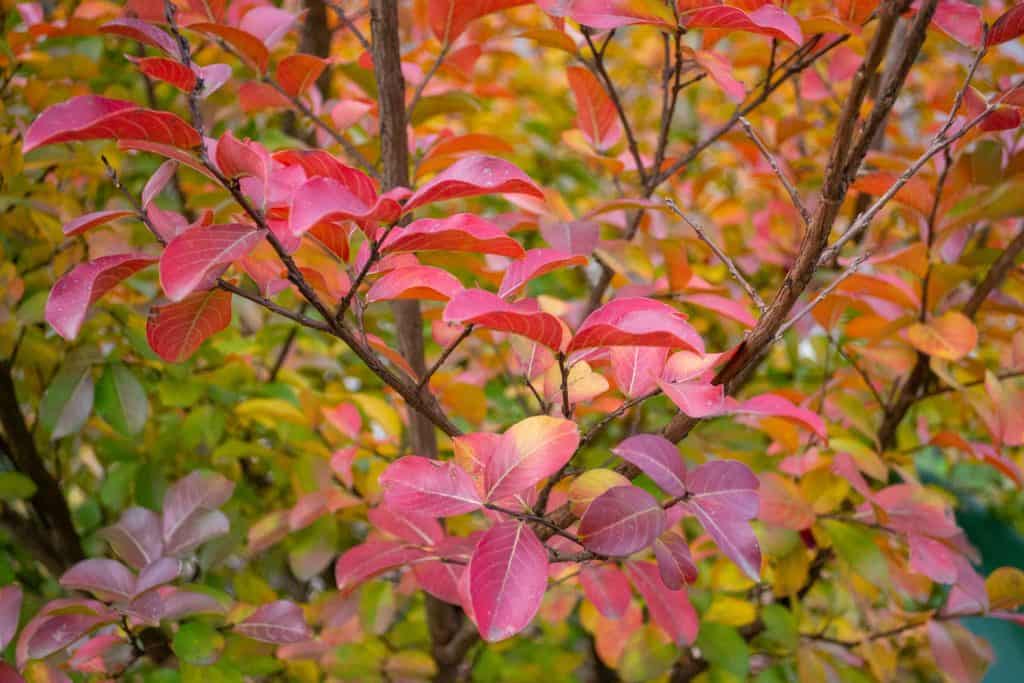
Many homeowners and plant lovers enjoy witnessing the changing colors of the flowers and leaves of the crepe myrtle. As summer transforms into autumn, it is common for healthy crepe myrtles to display a range of colors in their leaves.
The crepe myrtle is a wonderful addition to any property, as its display of leaves range in golden yellow, red, purples, and vibrant green. Encourage healthy, colorful foliage in your crepe myrtle and treat any signs of disease, pests, or other problems that cause color changes.
Before you go, you won't want to skip reading the following articles:



I have found a Crape Myrtle tree in my neighborhood with bright pink leaves in the off shoots on the base of the tree. The photos were taken in early summer…way too early to be blooms. Where can I send pics?